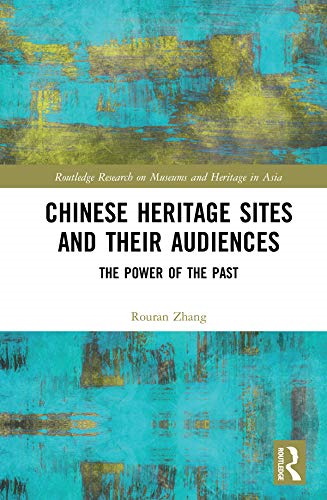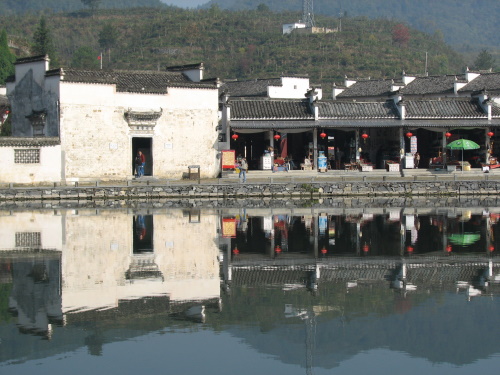Blog Books
Book: Chinese Heritage Sites and their Audiences
With 55 sites inscribed, China is the joint leader among the nations with the most WHS. It will probably be surpassed by Italy again after the combined 2020/2021 WHC, as China has only 1 proposal on the table while Italy has 3. It must have really hurt the Chinese that their Badain Jaran Desert proposal couldn’t be evaluated due to Covid reasons so they miss out on a year – even more so while they are hosting the WHC session. China already wasn’t a big fan of the Cairns Decision of 2000, which limited the number of nominations per country to 1 a year. It has so many more to offer and now it will take them 100 years!
The young Chinese scholar Rouran Zhang has written a study about how China deals with its heritage sites and how they are perceived by their visitors. The WHS of West Lake and Xidi & Hongcun are used as case studies. Zhang is also an expert member at the ICOMOS committee on Cultural Landscapes, so he brings in both the Chinese and the international perspective. “Chinese Heritage Sites and their Audiences” is a book for a scientific audience (with annotations and all that), but I learned a lot from it about China’s journey in the world of WHS.

The road to 55
China only ratified the WHC convention in 1985 and got its first batch of WHS in 1987. According to Zhang, they went through 3 phases:
1. 1985-2000: China accepted the international authorized heritage discourse and explored its meaning
2. 2000-2011: China made adjustments to its internal heritage policies to fit within the international framework
3. 2011-present: China has gained the confidence to nominate new types of WHS, such as cultural landscapes and cultural routes. It also understands that its status of WHS world power comes with international responsibilities (such as the contribution to the Angkor Restoration project)
During the second phase China reshaped its heritage management systems and policies along the lines of international organizations like UNESCO, ICOMOS, IUCN. That while recognizing that these international standards do not always fit the Asian perceptions, such as a strong focus on the harmonious relationship between man and nature. This resulted for example in a IUCN-style system of national parks, but allowing for both natural and cultural features to be highlighted.
China sees the WH listing process as a game and knows that it has to play according to the eurocentric rules for political and economic purposes. The main benefits are a sense of nationalism and the opportunity to attract (domestic) tourists, which will lead to economic development for remote areas in particular.

West Lake
West Lake (2011) already was a well-known tourist site in a well-developed region of China before its WH nomination. It was the country’s first nomination of a cultural landscape. Although the inscription seems to have gone smoothly, there was some disagreement between the Chinese and ICOMOS. ICOMOS changed the proposed OUV criteria upon inscription and negotiated in an exchange of letters beforehand that the Longjing tea gardens were left out from the core zone. Zhang sees this as a sign that the eurocentric ICOMOS experts didn’t grasp the full story. For the Chinese, there is no meaning in a West Lake without the tea culture. For ICOMOS, it was ‘just’ an agricultural site not even visible from the lake.
The research also unveiled that a group of local people were removed from their homes near West Lake in anticipation of the WH listing. Officials questioned by Zhang weren’t prepared to talk about it; the elderly displaced locals that he managed to track down mainly missed the proximity to the park and their old neighbours.
Xidi and Hongcun
ICOMOS on the other hand was quite smitten with the towns of Xidi and Hongcun and their vernacular architecture. No difficult deeper meanings here, it was all about historic buildings. This case study focuses on how the two towns have been affected by the surge in tourism after their WH listing in 2000. The inhabitants of Xidi at first profited well because all revenue went to the local community, which was united in the Villagers’ Committee of Xidi. The average income became three times as high as that of the rest of the poor province. Hongcun eventually came into the hands of a Beijing-based tourism company and became much more profitable. They professionalized its management, and invested in infrastructure (e.g. a direct road to the popular WHS of Huangshan) and in advertisement (including a 37 million USD theatre production).
Local authorities are mostly worried about preserving material authenticity that is recognized by national or international authorities, and banned local customs such as selling traditional food items as they would pollute the image. When renovation of the buildings is necessary, home owners get 40% of the costs reimbursed by the government.
Els - 13 June 2021